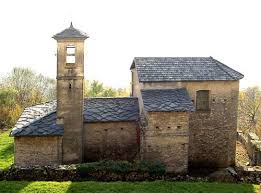One of the greatest examples of Romanesque architecture and one of the oldest sacred buildings in the Intelvi Valley, the small oratory dates back to 1000 AD and was affected, over the centuries, by so many interventions that it is necessary to divide its development into various stages, better specified in inside the research of Professor Marco Lazzati which we faithfully report here:
Phase I (10th-11th century?)
Probable Romanesque oratory of two square bays, approximately 7 meters long. It perhaps had a semicircular apse (not documented yet).
Dimensions smaller than those typical of Romanesque oratories in the area (generally 10 – 12 m long).
Only a section of the north wall remains of this building.
Phase II (15th-16th century)
Gothic-Renaissance oratory, incorporating a residual section of the north wall of the previous Romanesque building.
Rectangular apse frescoed at the beginning of the 16th century, with paintings almost contemporary with each other
· Madonna del latte tra i SS. Silvestro and Antonio Abate (GA De Magistris, 1506)
· col. bezel Blessing Father and Evangelists
· socket with i Months of the year
Phase III (first half of the 17th century) Covering of the nave with a barrel vault.
Construction of the lower part of the old sacristy.
Frescoes with SS. Sebastiano and Rocco (1634) next to the central one by De Magistris (1506).
Phase IV (second half of the 17th century)
Construction of the bell tower and raising of the old sacristy. Subsequently (18th century) the vault of the nave was frescoed.
Phase V (last years of the 18th century)
Demolition of the facade and simultaneous construction of the "new church" to the west, consisting of: transept, new nave and rectangular apse with rounded corners.
Decoration of the “new church” with neoclassical motifs.
Phase YOU (19th century?)
Construction of the new sacristy.
Phase VII (ca. 1930)
Closure of the nave-bell tower passage. Opening of the sacristy-bell tower passage.
Closure (probably at this stage) of access to the North "transept".
To date, the building has no façade as it is configured as the union of two opposing churches: the older one to the east and the more recent one to the west.
For this reason there are two presbyters and two sacristies inside. The bell tower is next to the older eastern apse. Rich in interesting frescoes which were restored by the Superintendency of Environmental and Architectural Heritage in the 1990s, the most interesting decoration is located in the lower register of the apse: a cycle of months which represents a "unique" in this territory. The external brickwork is irregular and has undergone a recent renovation. Even today, New Year's Eve is celebrated here, which takes place on 31 December.
For more information:
http://www.comune.blessagno.co.it/c013025/zf/index.php/servizi-aggiuntivi/index/index/idtesto/3
By Marco Lazzati: http://www.lazzatim.net/miofolder/PDF/VisitaSSilvestro.pdf
By Simona Castelli – ARTEVALLEINTELVI: The church of San Silvestro in Lura
By Simona Castelli – ARTEVALLEINTELVI: I faces of motherhood (min. 11.25am)



